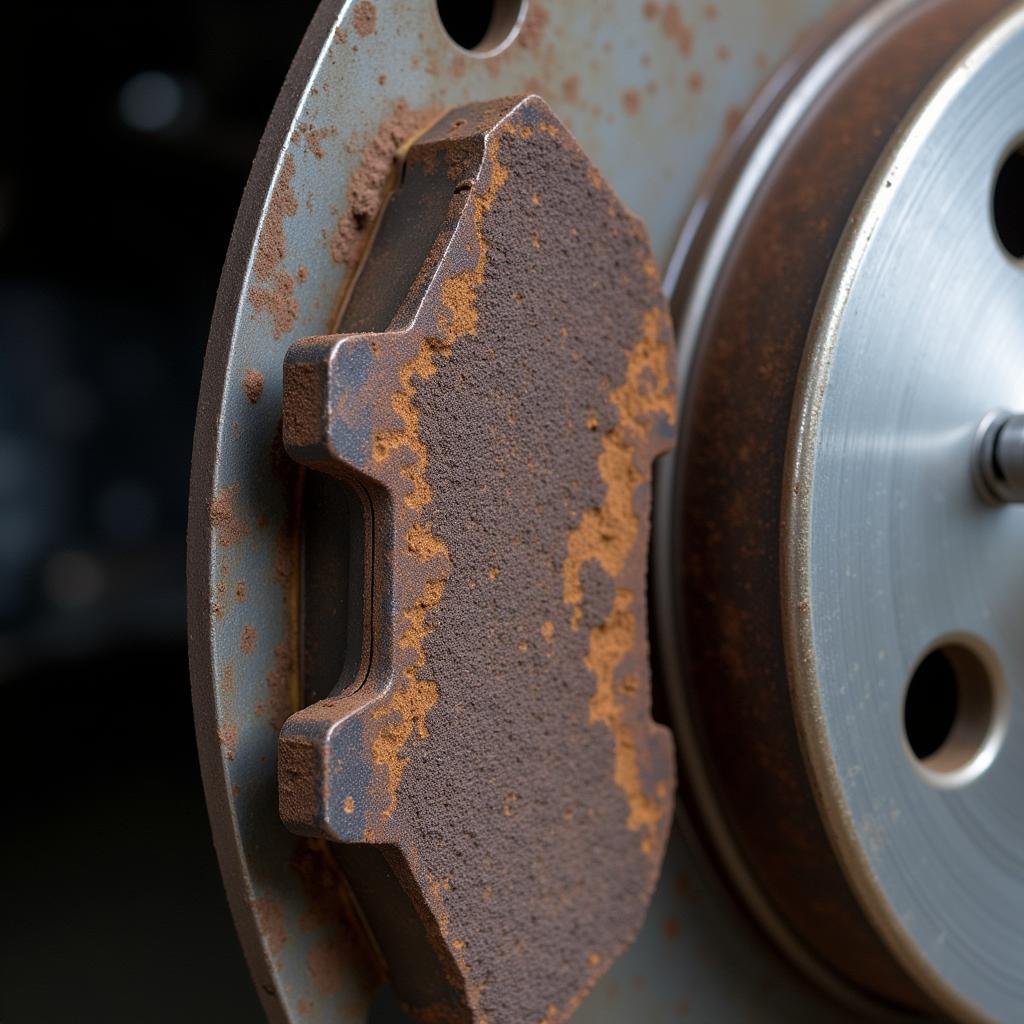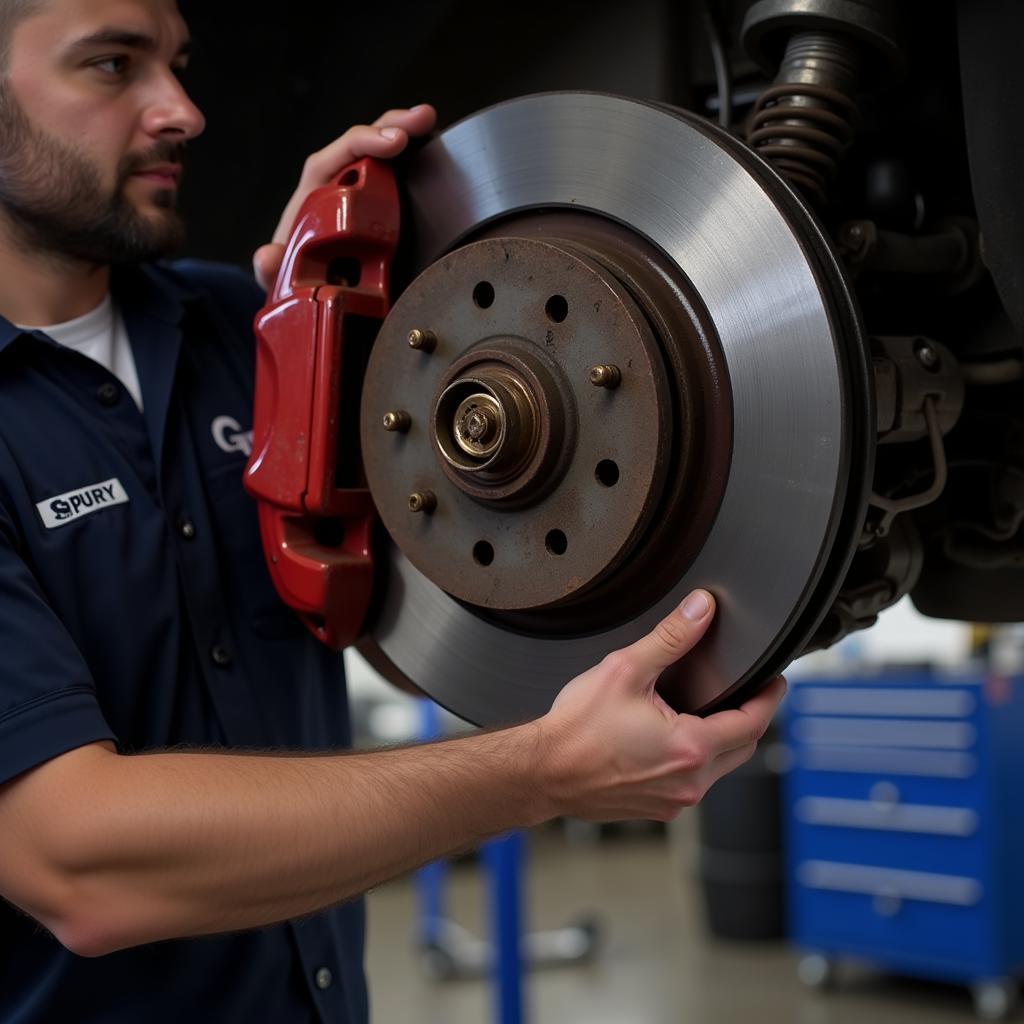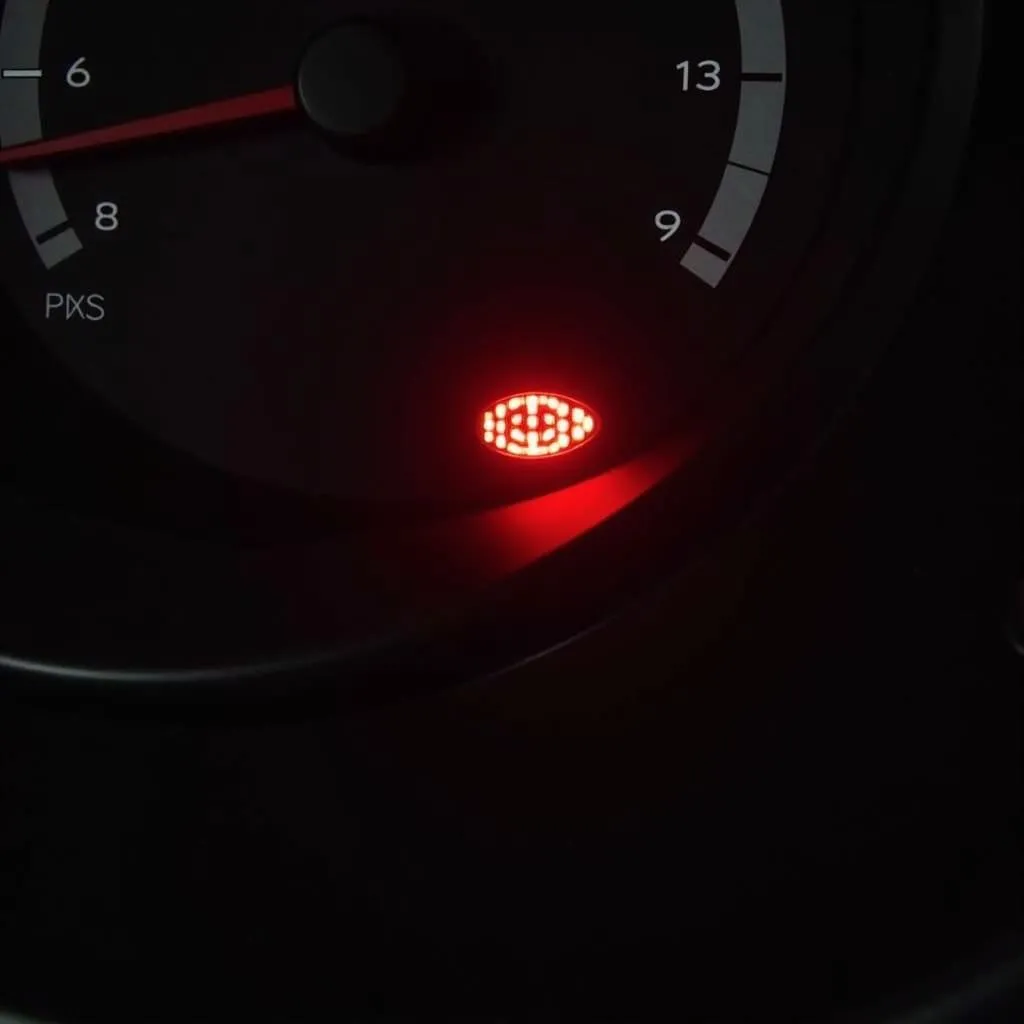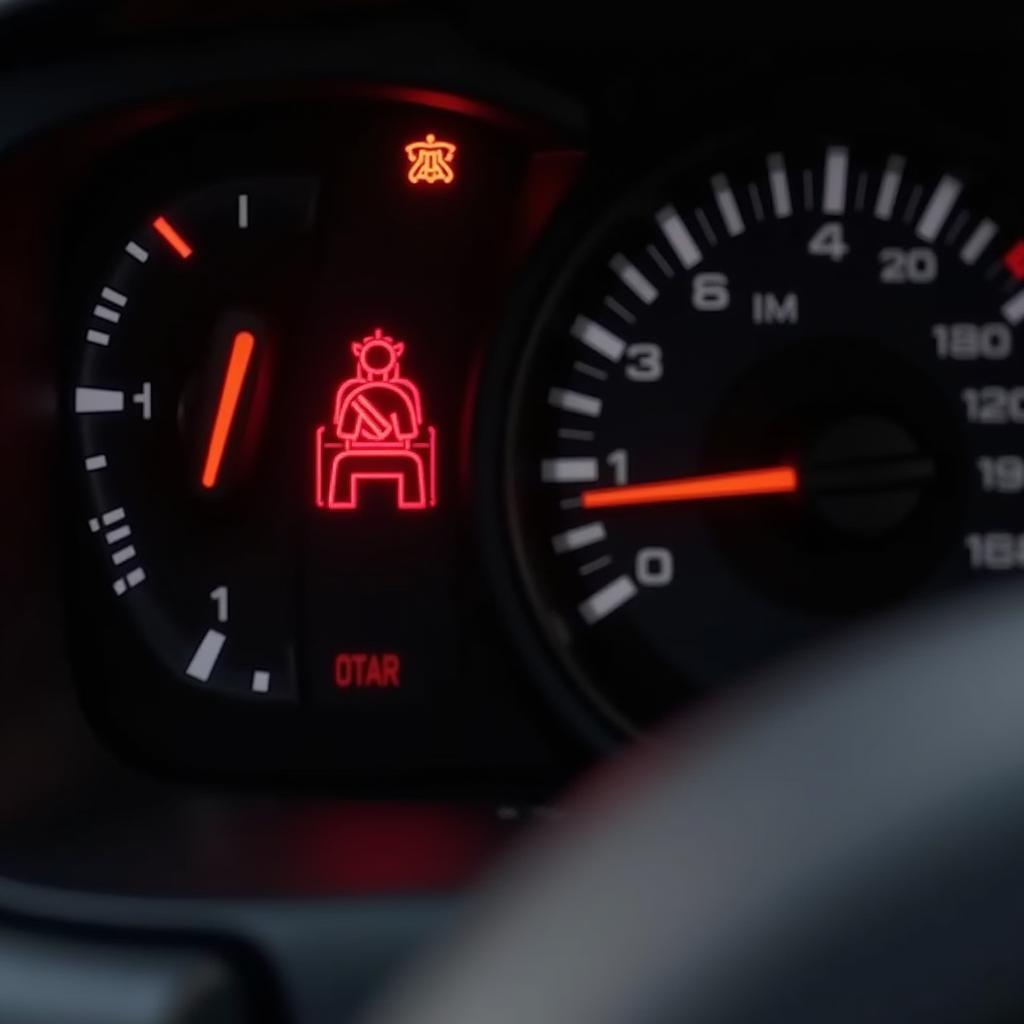A brake pad warning light illuminating on your dashboard is a stark reminder that your car’s braking system needs attention. This article delves into the intricacies of brake pad warnings, exploring their causes, implications, and solutions.
Understanding Brake Pad Warning Lights
The brake pad warning light, often symbolized by a circle with parentheses on either side and an exclamation mark in the center, is your car’s way of indicating that your brake pads have worn down to a critical level. Ignoring this warning can compromise your safety and lead to costly repairs.
What Causes a Brake Pad Warning Light to Turn On?
Several factors can trigger the brake pad warning light:
- Worn Brake Pads: The most common culprit is simply worn-down brake pads. Most brake pads have a built-in wear indicator, usually a small metal tab, that makes contact with the brake rotor when the pad reaches a certain thinness, triggering the warning light.
- Faulty Brake Pad Sensor: In some vehicles, a sensor wire embedded in the brake pad can break or become disconnected, erroneously illuminating the warning light even if the pads are still in good condition.
- Low Brake Fluid: While not directly related to brake pad wear, low brake fluid can also trigger the warning light. It’s crucial to check your brake fluid level and address any leaks immediately.
- Electrical Issues: Rarely, a malfunctioning brake light switch or wiring problem within the braking system can lead to a false warning light.
 Brake Pad Wear Indicator
Brake Pad Wear Indicator
What to Do When Your Brake Pad Warning Light Comes On
If you see the brake pad warning light illuminated on your dashboard, take these steps:
- Reduce Speed and Drive Cautiously: Avoid sudden braking and maintain a safe distance from other vehicles.
- Inspect Your Brake Pads: If possible, visually inspect your brake pads for wear. Thin pads with little to no friction material remaining require immediate replacement.
- Check Your Brake Fluid: Ensure your brake fluid reservoir is full. Low brake fluid can significantly impair braking performance.
- Consult a Qualified Mechanic: If you’re unable to diagnose the problem yourself, schedule an appointment with a trusted mechanic for a thorough inspection.
 Brake Pad Replacement
Brake Pad Replacement
Can I Still Drive with the Brake Pad Warning Light On?
While it’s technically possible to drive a short distance with the brake pad warning light on, it’s highly discouraged. Driving with worn brake pads significantly reduces your braking efficiency, increasing stopping distances and the risk of accidents.
“Ignoring a brake pad warning light is like playing Russian roulette with your safety,” cautions automotive expert John Smith. “The longer you wait, the more damage you risk, potentially leading to expensive repairs and dangerous driving conditions.”
Brake Pad Warning Light: Prevention and Maintenance
Preventing brake pad issues is always better than dealing with the consequences:
- Regular Brake Inspections: Schedule routine brake inspections with your mechanic, especially if you frequently drive in heavy traffic or hilly areas.
- Quality Brake Pads: Invest in high-quality brake pads from reputable brands. They might cost more upfront but offer better performance and longevity.
- Smooth Braking Habits: Avoid aggressive driving habits like hard braking, which accelerates brake pad wear.
Conclusion
The brake pad warning light is a crucial safety feature in your car. Understanding its causes, implications, and the necessary actions to take can save you from costly repairs and, most importantly, keep you safe on the road. Remember, timely maintenance and proactive care are key to ensuring optimal brake system performance and your overall safety.
FAQs
1. How long can you drive on brake pads after the warning light comes on?
It’s not advisable to drive with the brake pad warning light on. Driving distances will vary depending on driving conditions and the severity of the wear, but it’s best to address the issue immediately.
2. How much does it cost to fix a brake pad warning light?
The cost depends on the underlying cause. If it’s simply worn brake pads, the repair will be less expensive than if a sensor or other component needs replacement.
3. Can I reset the brake pad warning light myself?
While it’s technically possible to reset the light in some vehicles, it’s not recommended unless you’re confident in your mechanical skills. It’s always best to consult a qualified mechanic to diagnose and address the root cause.
4. Why is my brake pad warning light still on after replacing the brake pads?
The warning light might remain on if the sensor was damaged during the replacement or if there’s a separate issue with the braking system. Further inspection is required.
5. How often should I replace my brake pads?
Brake pad lifespan varies greatly depending on driving style and conditions. As a general rule, it’s recommended to have them inspected every 12,000 miles and replaced as needed.


